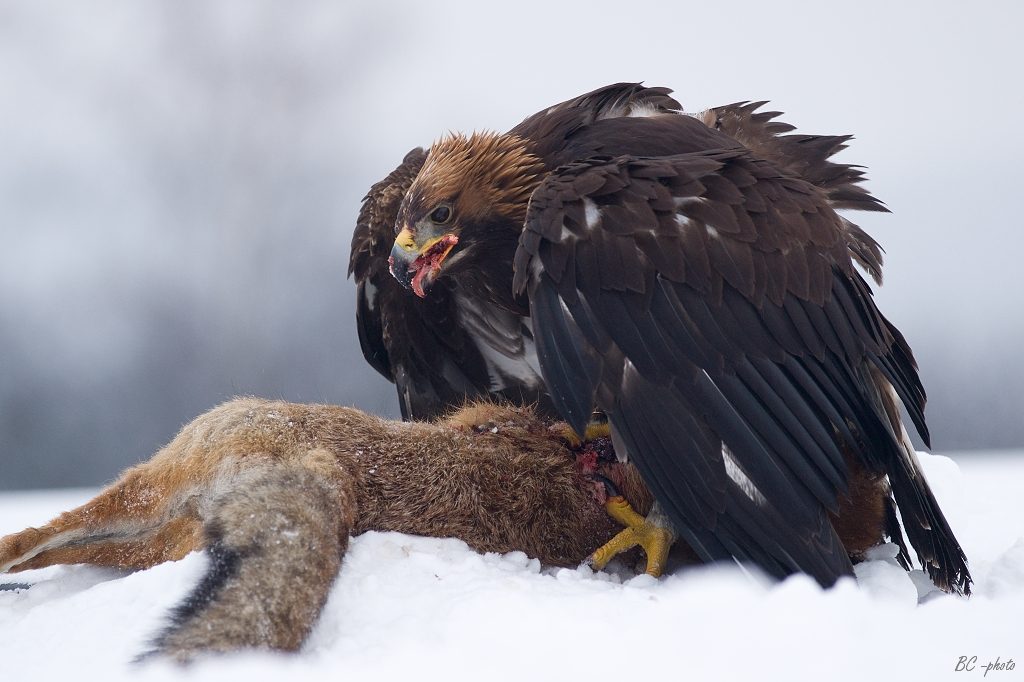
Foxes are a common sight in many parts of the world, with their distinctive red or white fur and bushy tail. These small carnivores are known for their adaptability and cunning, but they are also important members of their ecosystem, both as predators and prey. In this article, we will explore what eats a fox, what foxes eat, and where they live.
What Eats a Fox?
While foxes are predators themselves, they are also preyed upon by a variety of other animals. One of the biggest predators of foxes is the coyote, which is a larger carnivore that often preys on smaller animals like foxes. Other animals that prey on foxes include wolves, bears, cougars, and eagles.
In addition to these larger predators, foxes are also vulnerable to disease and parasites. One of the most common diseases that affects foxes is rabies, which is transmitted through the bite of an infected animal. Foxes are also susceptible to mange, a skin disease caused by mites, which can cause hair loss and make them more vulnerable to other predators.
What Do Foxes Eat?
Foxes are carnivores, which means they primarily eat meat. However, they are also opportunistic feeders, and will eat a wide variety of foods depending on what is available. Some of the most common foods that foxes eat include small mammals like rabbits, rodents, and squirrels, as well as birds, insects, and fish.
The diet of a fox can vary depending on the season and the location. In the winter, when food is scarce, foxes may rely more heavily on scavenging and hunting smaller prey. In the summer, when food is more plentiful, they may eat more fruits and berries.
What Do Arctic Foxes Eat?
Arctic foxes are a subspecies of the red fox that are adapted to living in cold environments, such as the Arctic tundra. Their diet is similar to that of the red fox, but they have some unique adaptations that allow them to survive in such a harsh environment.
During the winter, when food is scarce, Arctic foxes will feed on lemmings, which are small rodents that live in the tundra. They will also scavenge from other animals, such as polar bears and wolves, and may eat carrion from whales and other marine mammals.
In the summer, Arctic foxes will eat a wider variety of foods, including birds, eggs, and berries. They are also known to store food for later by burying it in the ground, a behavior known as caching.
What Do Red Foxes Eat?
Red foxes are the most common type of fox, and are found in many parts of the world. Their diet is similar to that of the Arctic fox, but they have some regional variations depending on their habitat.
In urban areas, red foxes may scavenge from trash cans and eat pet food left outside. In rural areas, they may feed on small mammals like rabbits and rodents, as well as birds and insects. They are also known to eat fruits and berries, especially in the summer when they are more plentiful.
Where Do Foxes Live?
Foxes are found all around the world, in both rural and urban areas. They can adapt to a variety of environments, including forests, grasslands, mountains, and even cities. Red foxes are the most widespread species of fox and are found throughout most of the Northern Hemisphere, including Europe, Asia, and North America. They are known for their adaptability and can thrive in urban environments, with some populations even living in parks and gardens in major cities.
Arctic foxes, on the other hand, are found in the Arctic tundra regions of North America, Europe, and Asia. They are well-adapted to the cold, harsh conditions of the Arctic, with thick fur and a compact body shape that helps them conserve heat. Their fur changes color depending on the season, with a white coat in the winter and a brownish-gray coat in the summer, which helps them blend in with their surroundings.
In conclusion, foxes are fascinating creatures that play an important role in the food chain. As predators, they help control the populations of small mammals and insects, and as scavengers, they help keep the environment clean by eating carrion. Red foxes and Arctic foxes have different diets and live in different habitats, but both are well-adapted to their respective environments. By learning more about what eats foxes and what foxes eat, we can better understand the delicate balance of nature and appreciate the diversity of life on our planet.
Leave a Reply